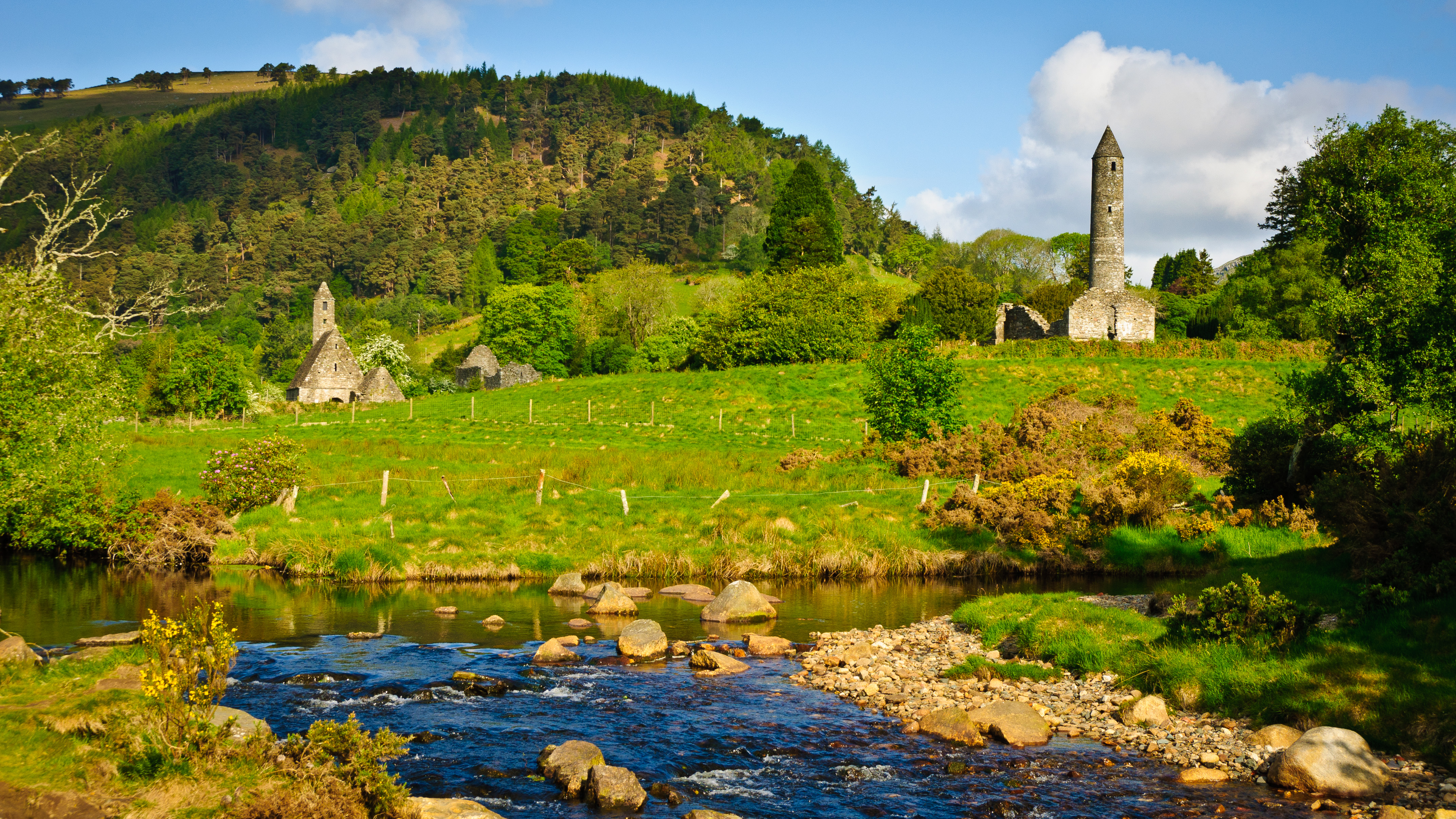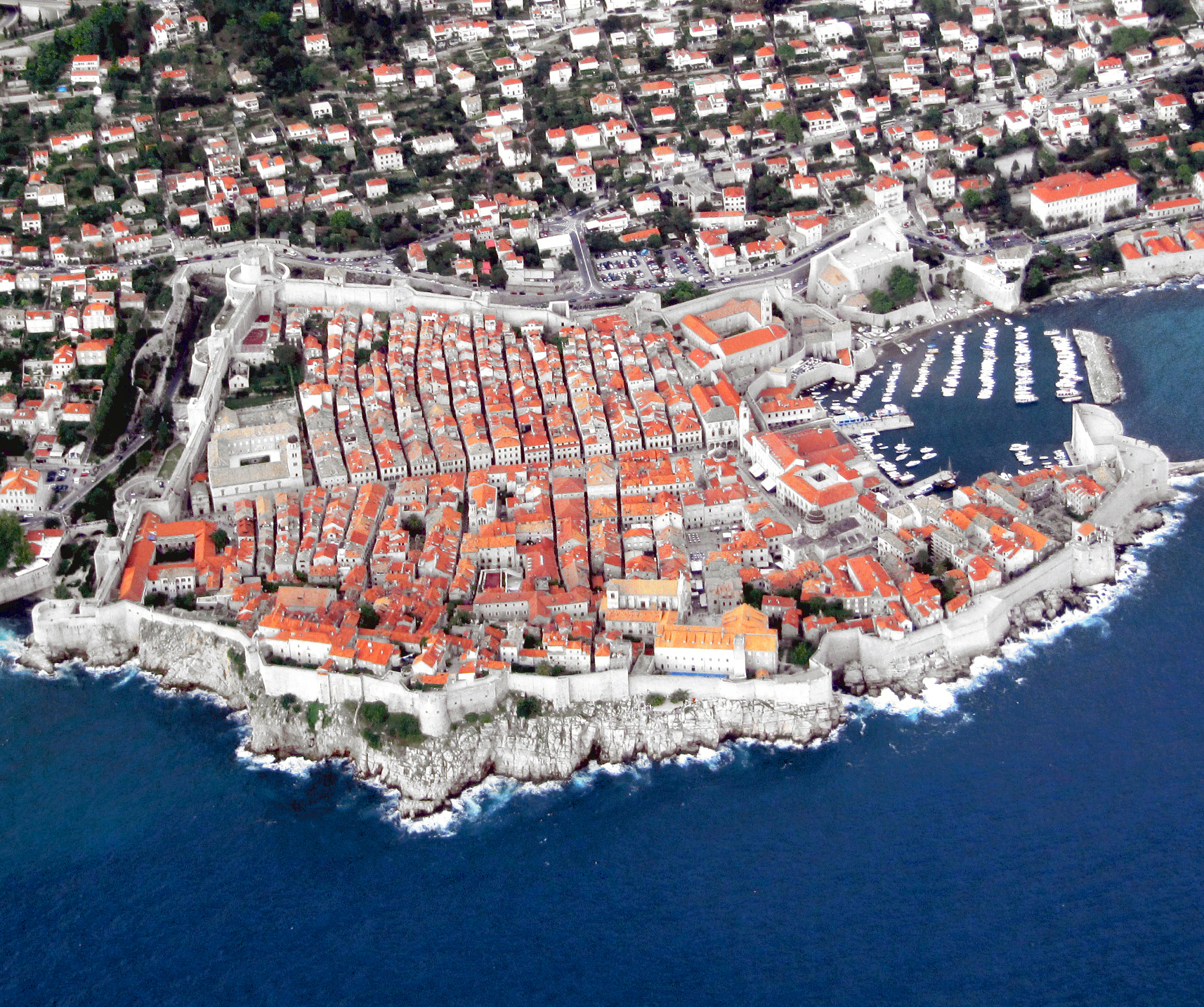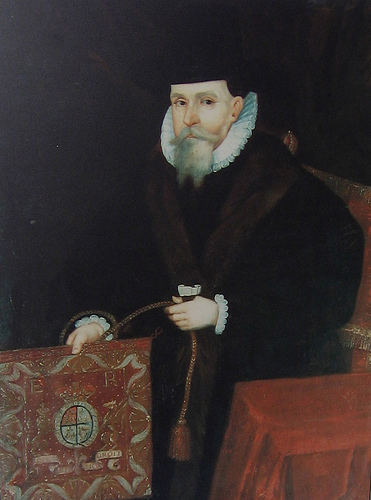|
Lorcán Ua Tuathail
Lorcán Ua Tuathail, known in English as Laurence O'Toole and in French as Laurent d'Eu (1128 – 14 November 1180), was Archbishop of Dublin (Catholic Church), Archbishop of Dublin at the time of the Norman invasion of Ireland. Lorcán played a prominent role in the Irish Church Reform Movement of the 12th century and mediated between the parties during and after the invasion. He was canonised in 1225 by Pope Honorius III. Early life Lorcán was born at Kilkea, County Kildare, Ireland, the youngest of four sons of King Muirchertach Ua Tuathail of the Uí Muiredaig, a branch of the Uí Dúnlainge dynasty. However, Castledermot claims him as well. His mother was an O'Byrne princess of the Uí Fáelán branch of the Uí Dúnlainge.Grattan-Flood, William. "St. Lawrence O'Toole." ''The Catholic Encyclopedia''. ... [...More Info...] [...Related Items...] OR: [Wikipedia] [Google] [Baidu] |
Kilkea
Kilkea () is a village and civil parish in County Kildare, Ireland, about from Dublin, and from the town of Carlow. The R418 regional road from Athy to Tullow passes through the village. History Formerly the land of the Ó Tuathails (O'Toole), after the Norman invasion, Sir Walter de Riddlesford built a motte and bailey castle there about 1180. It is part of the barony of Kilkea and Moone. Walter de Riddlesford's granddaughter, Emmeline Longespee, married Maurice FitzGerald, 3rd Lord of Offaly in 1273, and so the land passed to the Geraldine Earls of Kildare. Its importance as a town diminished after the rebellion of "Silken Thomas", the 10th Earl of Kildare, in 1534. People * Sir Ernest Shackleton (1874–1922), Antarctic explorer, was born and spent his childhood at Kilkea House. *Lorcán Ua Tuathail Lorcán Ua Tuathail, known in English as Laurence O'Toole and in French as Laurent d'Eu (1128 – 14 November 1180), was Archbishop of Dublin (Catholic Churc ... [...More Info...] [...Related Items...] OR: [Wikipedia] [Google] [Baidu] |
Diarmait Mac Murchada
Diarmait Mac Murchada (Modern Irish: ''Diarmaid Mac Murchadha''; anglicised as Dermot MacMurrough or Dermot MacMurphy; – c. 1 May 1171), was King of Leinster in Ireland from 1127 to 1171. In 1167, he was deposed by the High King of Ireland, Ruaidrí Ua Conchobair. To recover his kingdom, Mac Murchada solicited help from King Henry II of England. His issue unresolved, he gained the military support of the Richard de Clare, 2nd Earl of Pembroke (otherwise known as "Strongbow"), thus initiating the Anglo-Norman invasion of Ireland. In exchange for his aid, Mac Murchada promised Strongbow the hand in marriage of his daughter Aoife and the right to succeed to the Kingship of Leinster. Henry II then mounted a larger second invasion in 1171 to ensure his control over Strongbow, resulting in the Norman Lordship of Ireland. Mac Murchada was later known as Diarmait na nGall (Irish for "Diarmait of the Foreigners"). He was seen in Irish history as the king that invited the first-ev ... [...More Info...] [...Related Items...] OR: [Wikipedia] [Google] [Baidu] |
Gregorian Chant
Gregorian chant is the central tradition of Western plainsong, plainchant, a form of monophony, monophonic, unaccompanied sacred song in Latin (and occasionally Greek language, Greek) of the Roman Catholic Church. Gregorian chant developed mainly in western and central Europe during the 9th and 10th centuries, with later additions and redactions. Although popular legend credits Pope Gregory I with inventing Gregorian chant, scholars believe that he only ordered a compilation of melodies throughout the whole Christian world, after having instructed his emissaries in the Schola cantorum, where the Neume, neumatical notation was perfected, with the result of most of those melodies being a later Carolingian synthesis of the Old Roman chant and Gallican chant. Gregorian chants were organized initially into four, then eight, and finally 12 mode (music), modes. Typical melodic features include a characteristic Ambitus (music), ambitus, and also characteristic intervallic patterns relat ... [...More Info...] [...Related Items...] OR: [Wikipedia] [Google] [Baidu] |
Ruaidrí Ua Conchobair
Ruaidrí mac Tairrdelbach Ua Conchobair (Modern Irish: Ruairí Ó Conchúir; anglicised as Rory O'Conor) ( – 2 December 1198) was King of Connacht from 1156 to 1186, and High King of Ireland from 1166 to 1198. He was the last High King of Ireland before the Anglo-Norman invasion. Ruaidrí was one of over twenty sons of King Tairrdelbach Ua Conchobair (1088–1156). He and his sister Mór were Tairrdelbach's only children from his third wife, Cailech Dé Ní Eidin of Aidhne. ''Rigdamna Connachta'' Ruaidrí was not a favourite of his father, his brother Conchobar Ua Conchobair being Tairrdelbach's ''tánaiste'' and designated heir. In 1136, he and his brother Aedh (died 1195) took advantage of a low in Tairrdelbach's fortunes to stage a rebellion. Aedh was blinded by Conchobar on Tairrdelbach's orders but Ruaidrí was protected by the Archbishop of Connacht, Muireadhach Ua Dubhthaigh. In 1143, he staged another rebellion. He was arrested by Conchobar and Tighearnán Ua R ... [...More Info...] [...Related Items...] OR: [Wikipedia] [Google] [Baidu] |
City State
A city-state is an independent sovereign city which serves as the center of political, economic, and cultural life over its contiguous territory. They have existed in many parts of the world throughout history, including cities such as Rome, Carthage, Athens and Sparta and the Italian city-states during the Middle Ages and Renaissance, such as Florence, Venice, Genoa and Milan. With the rise of nation states worldwide, there remains some disagreement on the number of modern city-states that still exist; Singapore, Monaco and Vatican City are the candidates most commonly discussed. Out of these, Singapore is the largest and most populous, and is generally considered to be the last real city-state left in the world, with full sovereignty, international borders, its own currency, a robust military, and substantial international influence in its own right. ''The Economist'' refers to it as the "world's only fully functioning city-state". Several non-sovereign cities enjoy a high ... [...More Info...] [...Related Items...] OR: [Wikipedia] [Google] [Baidu] |
Gaels
The Gaels ( ; ; ; ) are an Insular Celts, Insular Celtic ethnolinguistic group native to Ireland, Scotland, and the Isle of Man. They are associated with the Goidelic languages, Gaelic languages: a branch of the Celtic languages comprising Irish language, Irish, Manx language, Manx, and Scottish Gaelic. Gaelic language and culture originated in Gaelic Ireland, Ireland, extending to Dál Riata in western Scotland in the Middle Ages, Scotland. In antiquity, the Gaels Hiberno-Roman relations, traded with the Roman Empire and also End of Roman rule in Britain, raided Roman Britain. In the Middle Ages, Gaelic culture became dominant throughout the rest of Scotland and the Isle of Man. There was also some Gaelic settlement Wales in the Roman era#Irish settlement, in Wales, as well as cultural influence through Celtic Christianity. In the Viking Age, small numbers of Early Scandinavian Dublin, Vikings raided and settled in Gaelic lands, becoming the Norse-Gaels. In the 9th century ... [...More Info...] [...Related Items...] OR: [Wikipedia] [Google] [Baidu] |
Saint Malachy
Malachy (; ; Modern ; ) (11th century in Ireland, 1094 – 2 November 1148 in Ireland, 1148) is an Irish saint who was Archbishop of Armagh, to whom were attributed several miracles and an alleged vision of 112 popes later attributed to the apocryphal (i.e. of doubtful authenticity) Prophecy of the Popes. Malachy was the first native-born Irish saint to be formally canonised. His brother was Gilla Críst Ua Morgair, who was Bishop Christian of Clogher from 1126 to 1138. Life Máel Máedóc, whose surname was Ua Morgair, was born in Armagh in 1094. Bernard of Clairvaux describes him as having noble birth. He was baptized Máel Máedóc, meaning 'devotee or servant' of Máedóc (Máedóc of Ferns) which was rendered ''Malachus'' in Latin (and subsequently as ''Malachy'' in English) and was trained under the famous recluse Imhar O'Hagan, subsequently Abbot of Armagh. Mac Íomhair#Etymology, Imhar was in sympathy with the aims of those who sought to reform the Irish church, a ... [...More Info...] [...Related Items...] OR: [Wikipedia] [Google] [Baidu] |
Clane
Clane (; ) is a town in County Kildare, Ireland, from Dublin. With a population of 8,152 in 2022, it is the ninth largest town in Kildare and the 66th largest in Ireland. The town is on the River Liffey. Clane gives its name to the associated townland, civil parish, electoral division and surrounding barony. History Clane is located on the crossroads of the R403 and R407 regional roads. The town most probably owes its origin to the foundation of Clane Friary in the sixth century, from about 520 A.D., when Ailbe of Emly, Bishop of Ferns, founded an Abbey in Clane and made St. Senchel the Elder its first Abbot. Saint Ultan Tua, who used to put a stone into his mouth to prevent him from speaking during Lent, and his brother Fotharnaise, are said to have been buried in Clane. They were brothers of Maighend, Abbot of Kilmainham, from whom the parish and church of Mainham, near Clane, were probably called. King Mesgegra's Mound claims links to the legendary first-century AD ... [...More Info...] [...Related Items...] OR: [Wikipedia] [Google] [Baidu] |
Archbishop Of Dublin
The Archbishop of Dublin () is an Episcopal polity, archiepiscopal title which takes its name from Dublin, Republic of Ireland, Ireland. Since the Reformation in Ireland, Reformation, there have been parallel apostolic successions to the title: one in the Catholic Church and the other in the Church of Ireland. The archbishop of each Christian denomination, denomination also holds the title of Primacy of Ireland, Primate of Ireland. History The Roman Catholic Archdiocese of Dublin, diocese of Dublin was formally established by Sigtrygg Silkbeard, Sigtrygg (Sitric) Silkbeard, Kings of Dublin, King of Dublin in 1028, . ''Diocese of Dublin and Glendalough''. Retrieved on 31 March 2010. and the first bishop, Donat, Bishop of Dublin, Dúnán, was consecrated in about the same year. The diocese of Dublin was subject to the Province of ... [...More Info...] [...Related Items...] OR: [Wikipedia] [Google] [Baidu] |
Dublin Christ Church Cathedral Baptistery Window Saint Laurence O'Toole 2012 09 26
Dublin is the capital and largest city of Republic of Ireland, Ireland. Situated on Dublin Bay at the mouth of the River Liffey, it is in the Provinces of Ireland, province of Leinster, and is bordered on the south by the Dublin Mountains, part of the Wicklow Mountains range. Dublin is the largest city by population on the island of Ireland; at the 2022 census of Ireland, 2022 census, the city council area had a population of 592,713, while the city including suburbs had a population of 1,263,219, County Dublin had a population of 1,501,500. Various definitions of a metropolitan Greater Dublin Area exist. A settlement was established in the area by the Gaels during or before the 7th century, followed by the Vikings. As the Kingdom of Dublin grew, it became Ireland's principal settlement by the 12th century Anglo-Norman invasion of Ireland. The city expanded rapidly from the 17th century and was briefly the second largest in the British Empire and sixth largest in Western Europ ... [...More Info...] [...Related Items...] OR: [Wikipedia] [Google] [Baidu] |
History Ireland
''History Ireland'' is a magazine with a focus on the history of Ireland. The first issue of the magazine appeared in Spring 1993. It went full-colour in 2004 and since 2005 it is published bi-monthly. It features articles by a range of writers and book reviews. The magazine's editor is Tommy Graham of the Tisch School of the Arts, New York University New York University (NYU) is a private university, private research university in New York City, New York, United States. Chartered in 1831 by the New York State Legislature, NYU was founded in 1832 by Albert Gallatin as a Nondenominational ..., Dublin Programme. References External linksMagazine website [...More Info...] [...Related Items...] OR: [Wikipedia] [Google] [Baidu] |







